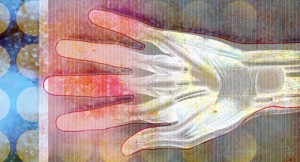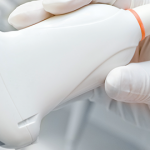 BALTIMORE—Rheumatology is a field in which all data points are considered in building the case for a patient’s diagnosis and seeking to clarify disease activity and prognosis. In recent years, information gleaned through ultrasound imaging has helped supplement the data gathered from the traditional history, physical exam, and laboratory and radiographic studies alone.
BALTIMORE—Rheumatology is a field in which all data points are considered in building the case for a patient’s diagnosis and seeking to clarify disease activity and prognosis. In recent years, information gleaned through ultrasound imaging has helped supplement the data gathered from the traditional history, physical exam, and laboratory and radiographic studies alone.
At the 17th Annual Advances in the Diagnosis and Treatment of the Rheumatic Diseases meeting at Johns Hopkins University School of Medicine, Baltimore, Dana DiRenzo, MD, MHS, RhMSUS, instructor of medicine, Johns Hopkins University School of Medicine, provided an extremely helpful overview of the use of ultrasound imaging in patients with inflammatory arthritis.
Limitations of Traditional Examinations
Dr. DiRenzo began by noting some of the limitations of the traditional clinical examination in evaluating patients for rheumatoid arthritis (RA). Disease activity scores can sometimes be artificially elevated in patients with comorbidities that increase the tender joint count even in the absence of frank joint swelling, she explained. The issue of inter-observer variance of clinical joint assessments also arises, with different clinicians having different assessments of the presence or absence of synovitis in the same joint for a specific patient. More recently, a newfound appreciation has developed for the entity of “subclinical synovitis,” which may not be easily detectable on the clinical exam.
For the definition of terms for ultrasound findings, Dr. DiRenzo referenced the Outcome Measures in Rheumatology (OMERACT) group definitions for ultrasound-detected pathologies.
Synovitis is defined as the presence of a hypoechoic synovial hypertrophy regardless of the presence of effusion or any grade of Doppler signal.
The term erosion is defined as intra- and/or extra-articular discontinuity of bone surface that is visible in two perpendicular planes.1
Other helpful terms include gray scale, which is the modality used to detect lesions of synovial effusion and hypertrophy, and power Doppler, which is the modality used to detect blood flow to the synovial membrane.2
Baseline Ultrasound Assessment
Ultrasound is used in rheumatology for diagnosis and disease monitoring. It can also assist in predicting prognosis, Dr. DiRenzo noted. With regard to diagnosis, Horton et al. evaluated 60 patients with new-onset undifferentiated arthritis who did not meet 2010 ACR/European League Against Rheumatism (EULAR) RA classification criteria.3 These patients underwent baseline ultrasound assessment and then were followed prospectively, with 22% ultimately meeting criteria for RA, and 53% (32 of the 60 patients) receiving methotrexate within 12 months after enrollment. The authors found that severity of gray scale synovitis detected across 26 joints was predictive of progression to RA and of methotrexate use, independent of the clinical swollen joint count or disease activity score.


